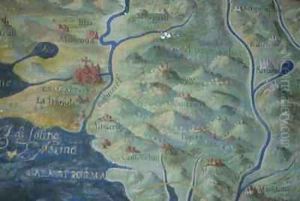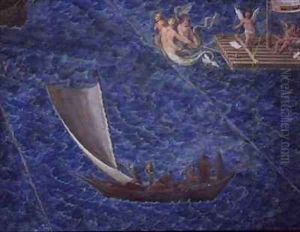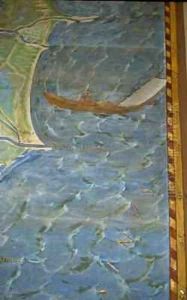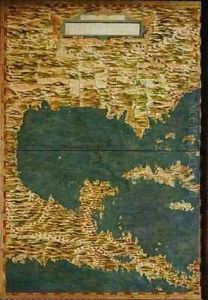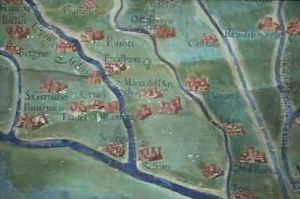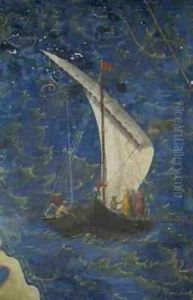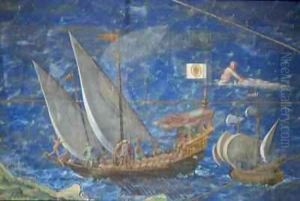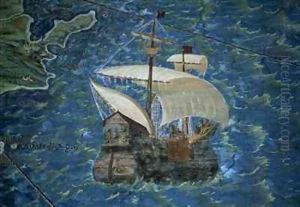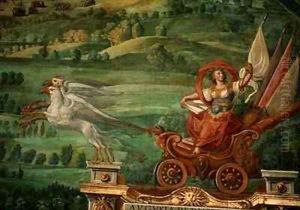Egnazio Danti Paintings
Egnazio Danti, born as Ignazio Danti, was an Italian mathematician, astronomer, cosmographer, and a Dominican friar. Born on April 29, 1536, in Perugia, Italy, he was part of a family of renowned artists and scholars. His uncle, Girolamo Danti, was a well-known painter and his brother, Vincenzo Danti, became a prominent sculptor. Egnazio Danti joined the Dominican Order in 1555 and later studied at the convent of San Marco in Florence, where he extensively engaged in mathematical and astronomical studies.
Danti's work was heavily influenced by the Renaissance movement, which emphasized the rediscovery and application of classical knowledge. He became a professor of mathematics at the University of Bologna in 1568, where he taught Euclid's geometry and Ptolemy's astronomy. Danti is perhaps best known for his contributions to cartography and geography. He created detailed maps and globes, and in 1574 he was commissioned to design and paint the Gallery of Maps in the Vatican. The gallery is a remarkable series of topographical maps of Italy that combines geographical accuracy with rich decorative elements.
Apart from his cartographic work, Danti was also an accomplished instrument maker. He constructed astrolabes, sundials, and other scientific instruments that were critical for navigation and astronomical observations. In 1577, he was appointed as the cosmographer to the court of Cosimo I de' Medici, the Grand Duke of Tuscany, where he also served as the tutor to the Medici children.
Danti also played a significant role in the Gregorian calendar reform. He worked with the commission established by Pope Gregory XIII that was tasked with reforming the Julian calendar. The aim was to correct the drift of the calendar with respect to the equinoxes and to provide a more accurate system for calculating the date of Easter.
Throughout his life, Danti remained a devout religious scholar and educator. He wrote several books on astronomy and geography, integrating scientific inquiry with his religious beliefs. Egnazio Danti passed away on October 19, 1586, in Alatri, Italy. His legacy is preserved in the instruments he created, the maps he designed, and in the Gallery of Maps in the Vatican, which continues to be admired by visitors from around the world.












